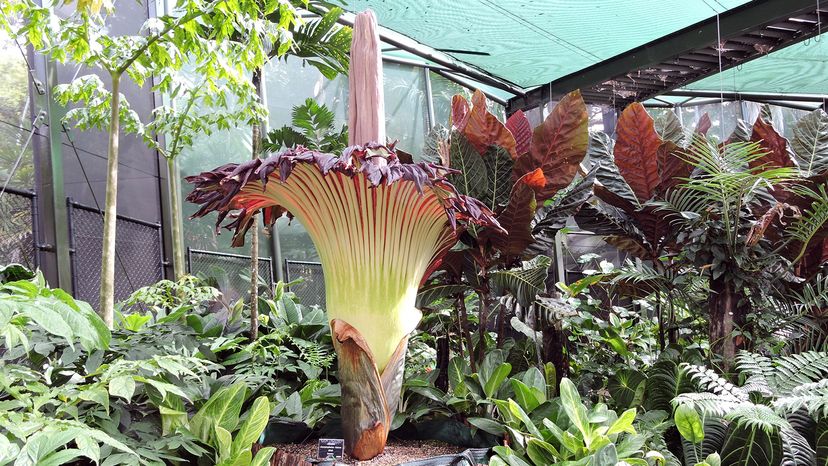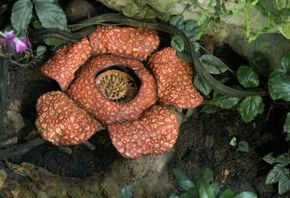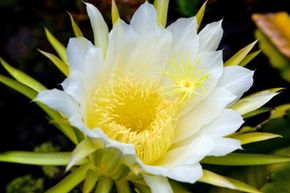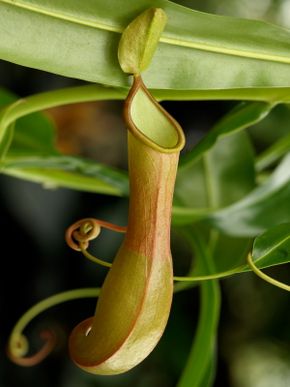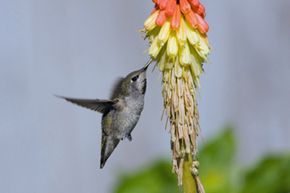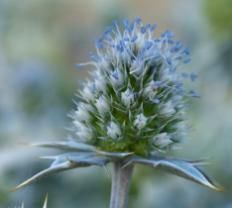When the soil is too poor to provide enough nutrients to sustain the plant, what's a poor flower to do? Turn carnivore, of course.
The first published documentation of the American pitcher plant, a native of southeastern coastal plains of North America, came from Florida in 1576. Much later, in 1793, noted American botanist William Bartram took the time to notice that vast numbers of insects got trapped in the little "pitchers" of the plant.
It wasn't until 1887 that South Carolina physician and amateur botanist Dr. Joseph H. Mellichamp proved the carnivorous nature of this unusual plant through a series of experiments that conclusively showed that insects caught in the plant were digested and reabsorbed by the plant. Studies on this wondrous herb continue today.
Life Cycle of the American Pitcher Plant
Sometime between late February and May, depending on the species, lovely five-petalled flowers emerge from the ground. Nonlethal leaves appear shortly after the blooms. In yellows or shades from pale pink to red, the flowers nod downward from stalks of 1 to 3 feet (33 centimeters to 1 meter).
The scented blooms last from one to two weeks, attracting bees to pollinate them. It isn't until the petals drop from the flowers (revealing attractive seed pods) that the deadly pitchers open. This delay protects the pollinators from being devoured before they help create the plant's next generation.
Growing upright from the sandy, nutrient-sparse ground, the pitchers themselves could be mistaken for flowers. Many sport a ruffled "umbrella" over the opening of the tube. Red veins contrast with the lush, green foliage, making attractive and interesting patterns.
The appealing colors lure insects to the pitcher, which contains sweet nectar. And it's here that the plot takes a sinister twist.
The deadly nectar contains a narcotic, coniine, which causes paralyses and can cause death. The drugged insects fall into the tubular pitcher. Because of the combined effects of the drug and the structure of the pitcher, they can't crawl out.
In the bottom of the pitcher, the plant cooks up a soup of digestive acids and enzymes that break down the soft parts of the bugs. When the bug is as liquefied as it's going to get, the plant reabsorbs the soup.
This is how it gets the nitrogen, potassium, phosphorous and other nutrients that it needs but can't draw from the poor soil it grows in. Ants, flies and wasps are some of the insects that fall prey to the American pitcher plant.
Of the original Sarracenia population in the southeast, only about 5 percent remains [source: D'Amato]. Pitcher plants take years to mature, but you can cultivate them in your garden.
Growing American Pitcher Plants at Home
There are many curious and beautiful varieties and a host of hybrids. You can start them from seeds or rhizome cuttings, as long as the rhizome has a few roots attached.
Sarracenia need a light, sandy soil. Carnivorous plant expert Peter D'Amato recommends a half-and-half mixture of sand and peat in plastic or glazed ceramic pots. As a southeastern bog plant, it needs wet soil and full sun with warm summers and mild winters.
If you live in a temperate climate, you can plant them outside in a bog garden. The plants will experience three to four months of dormancy in the winter, but in the summer, they'll turn into "gluttonous pigs," according to D'Amato. Indoor plants may need supplemental hand feeding of crickets or dried insects.
If you're intrigued by the pitcher plant, keep reading to learn about the plant that Charles Darwin claimed interested him more than the origin of all the species of life on earth.
